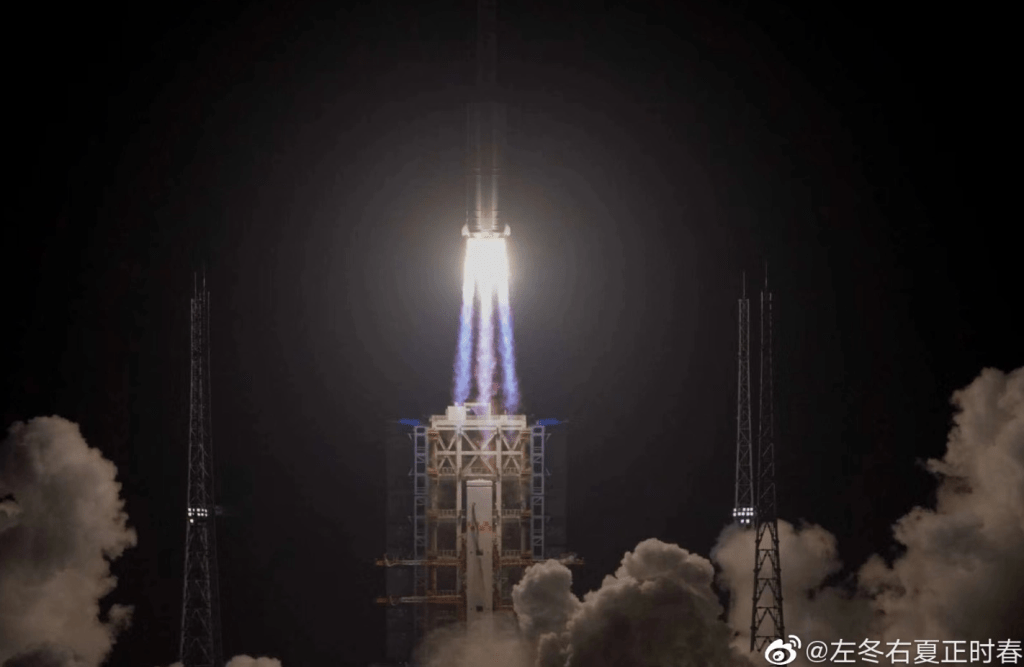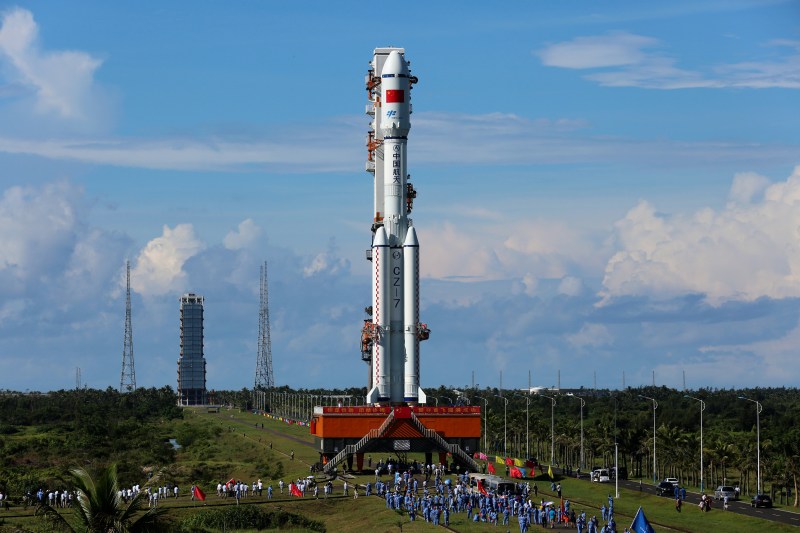Featured image credit: Xinhua News
Lift Off Time | March 11, 2021 – 17:51 UTC March 12, 2021 – 01:51 BJT |
|---|---|
Mission Name | XJY-6 02 |
Launch Provider | China Aerospace Science Corporation (CASC) |
Customer | Chinese Ministry of National Defense |
Rocket | Long March 7A |
Launch Location | LC-201, Wenchang Satellite Launch Center, China |
Payload mass | 6,300 kg (~14,000 lbs) |
Where did the satellite go? | Geostationary Earth Orbit (GEO); initially Geostationary Transfer Orbit |
Did they attempt to recover the first stage? | No, this is not a capability of the Long March 7A |
Where did the first stage land? | It crashed into the ocean |
Did they attempt to recover the fairings? | No, this is not a capability of the Long March 7A |
Were the fairings new? | Yes |
This was the: | – 1st successful launch of the Long March 7A – 4th launch of the Long March 7 – 2nd launch of the Long March 7A – 20th orbital launch attempt of 2021 (19th successful orbital launch) |
Where to watch | Unofficial replay |
How did it go?
The China Aerospace Science Corporation (CASC) successfully launched the XJY-6 02 satellite on their Long March 7A rocket to a Geostationary Transfer Orbit (GTO). The rocket launched from LC-201, Wenchang Satellite Launch Center, in China, which marked the first successful Long March 7A mission. The maiden flight of the Long March 7A failed shortly after launch, but no more information was released.
XJY-6 02 Satellite
Due to the classified nature of the XJY-6 (Tongxin Jishu Shiyan) 02 extremely little is known about the satellite. The Chinese Ministry of Defense has stated that satellite will be used to validate new technology; however, it is thought that the satellites are used for some military purposes, more specifically, that the satellite is a reconnaissance testing satellite testing new optical membrane technologies, similar to DARPA’s MOIRE program.
Long March 7A
The Long March 7A (also known as the Chang Zheng 7A) is a 3 stage medium lift launch vehicle. It is able to put up to 13,500 kg into low-Earth orbit, and up to 7,000 kg into Geostationary Transfer Orbit.

First stage
The first stage of the Long March 7A consists of the center core and 0, 2, or 4 liquid fueled boosters. The core is based on the Long March 5’s core and is 3.35 meters in diameter. It has two keralox oxygen-rich staged combustion cycle YF-100 engines. Each engine produces roughly 1,200 kN of thrust and burns with a specific impulse of 300 seconds.
Each booster consists of a single YF-100 engine, meaning in total the vehicle can produce up to 7,200 kN of thrust.
Second stage
The second stage is also 3.35 meters in diameter. It contains 4 keralox oxygen-rich staged combustion cycle YF-115 engines. Each engine produces 176.5 kN of thrust, has an ISP of 341.5 seconds, and a chamber pressure of 117 bar.
Third stage
The Long March 7A has a hydrolox third stage that is derived from the Long March 3B. The third stage uses 2 YF-75 engines. The engine produces 78.45 kN of thrust and has an ISP of 438 seconds. This makes it one of the most efficient chemical rocket engines, behind the RS-25 with an ISP of 452 seconds, the RL-10 with an ISP of 465 seconds, and some other hydrolox engines.





